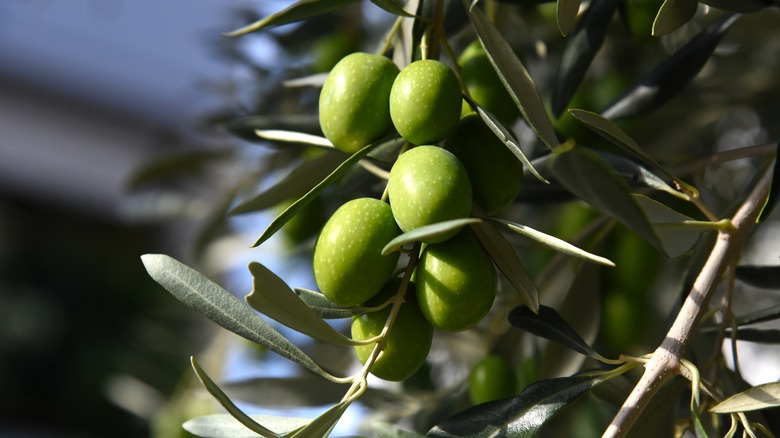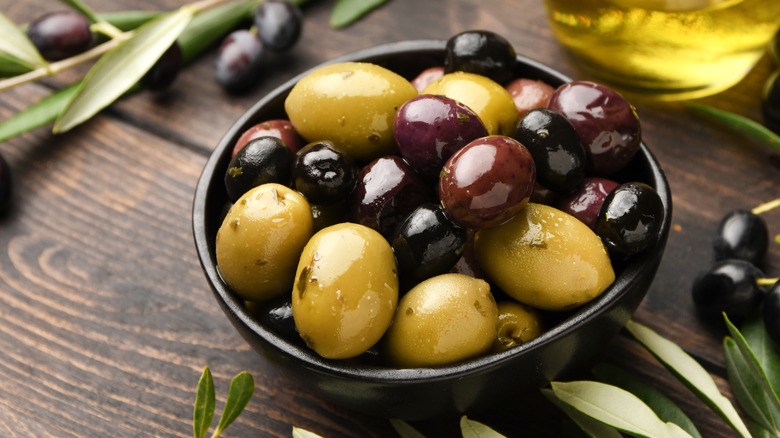Why You Can't Actually Eat Fresh Olives
The elegant bowl of olives at your dinner table might make your lips pucker with their salty-sour bite. However, fresh olives plucked directly from the branch are so bitter, they're inedible. Much like the stinging aroma alliums like garlic, chives, and tear-inducing raw onions release to protect themselves from hungry critters, raw olives possess an off-putting bitterness as a defense mechanism. This is the result of the phenolic compound, oleuropein. It acts as a deterrent to protect olives from voracious creatures.
Table olives, like the ones dotting your charcuterie board, must first be cured before they're palatable to munch on. It's estimated that only 10 percent of olives harvested become table olives, while the other 90 percent are used to make olive oil.The curing process eliminates the fruit's bitterness (yes, olives are a stone fruit like peaches, plums, and apricots). There are four primary methods for curing olives: brine curing, dry salt curing, water curing, and lye curing.
A cure for bitterness
For thousands of years, olives have enjoyed a sacred and succulent existence. The olive plant was being cultivated in the Mediterranean by 3,000 B.C.E. It's believed that Romans first created a technique for curing olives, which later broadened into the myriad methods used today.
During brine curing, olives are left directly in a brine (or salt water mixture) where they acquire flavor as the olives ferment naturally. Dry salt curing uses very ripe olives. The fruit is coated in salt and left to dry for a matter of weeks. This process results in a particularly strong flavor. During the water curing process, olives are soaked in water for weeks to months. Each day, the water is replaced. Later, the olives are finished with flavorings like vinegar and salt. Lye cured olives are placed in a solution of lye and water. The lye strips the fruit of its harsh oleuropein flavor. The olives are then rinsed with cold water to remove the lye.

